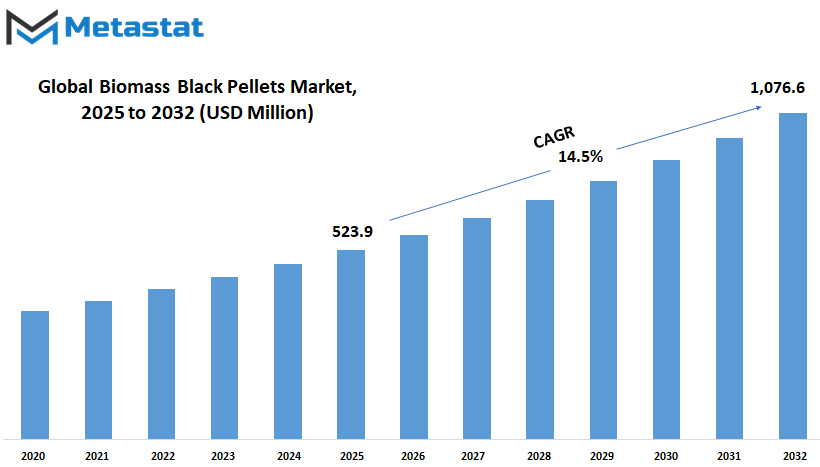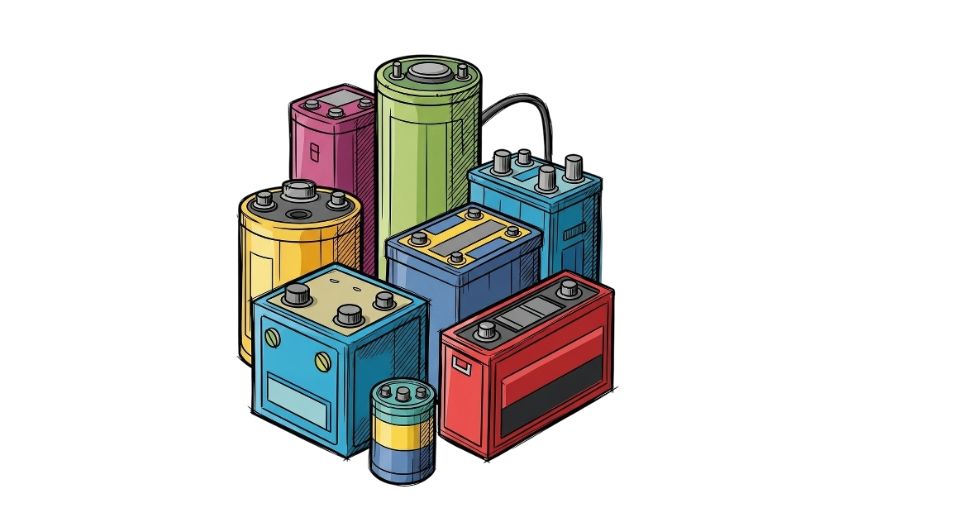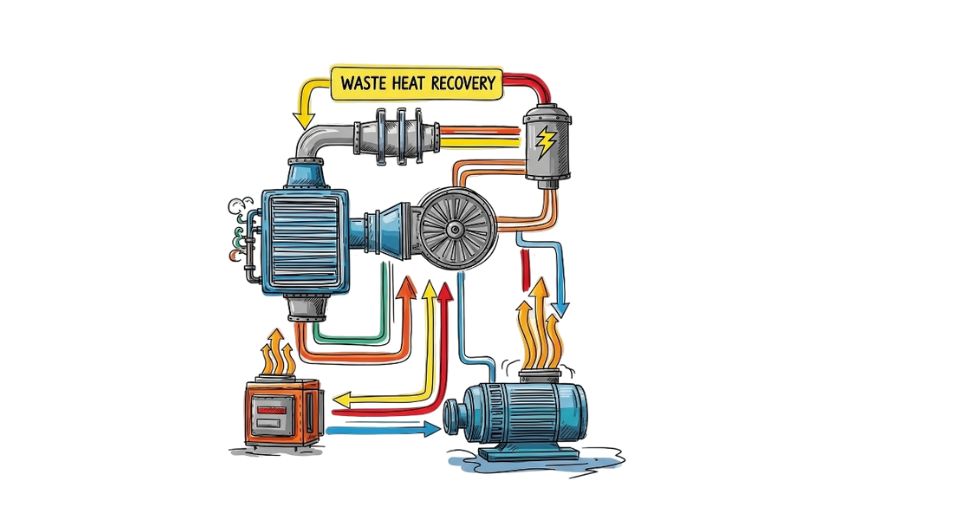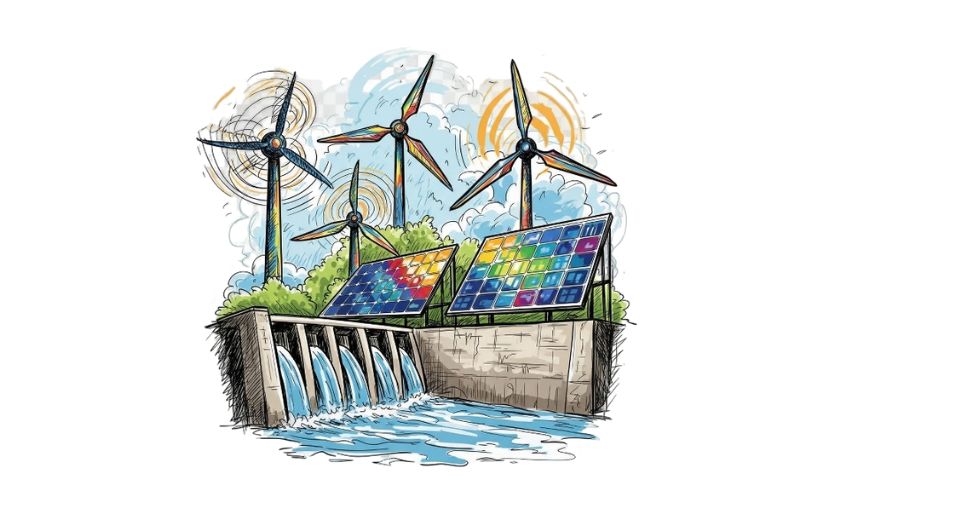MARKET OVERVIEW
The global biomass black pellets market is becoming a major segment in renewable energy sources as alternative sources to conventional fossil fuels. The pellets are torrefied to improve energy density, moisture resistance, and combustion efficiency over traditional wood pellets. Cleaning the energy path is the objective of industries and power generation plants; therefore, this market offers a significant area for achieving sustainability goals while reducing dependence on coal.
The Global Biomass Black Pellets Market demands biomass-based fuel continuously as all the different industries convert to low-carbon energy sources. These pellets have superior handling characteristics, thereby making storage and transportation usable with minimum degradation. Outdoor storage without moisture absorption is possible due to their improved hydrophobic characteristics, unlike conventional biomass pellets. Directly interfacing into the existing coal-fired power plants without or with very little modification will make the substantial part of their wide spread, thus qualifying them as a convenient solution to reduce greenhouse gases emissions.
Some of the industries served by the Global Biomass Black Pellets Market will include power generation, district heating, and industrial applications that require high energy density fuels in the future to come. The stricter environmental regulations laid down by governments shall keep pricing pressure and urge energy producers to seek cheaper alternatives through compliance and efficiency, making high calorific valued black pellet more attractive as a space-parity alternative source of energy for coal in energy-demanding processes.
The existing logistics infrastructures serve as the main determinants to which biomass black pellets stand in the progress of the market. Unlike untouched biomass, which often needs special handling, these pellets can be transported through conventional coal supply chains, making it very easy to use while availing of all the conveniences. As well, with these new networks in logistics, the Global Biomass Black Pellets Market would move with developing technologies in storage, processing, and in transportation which would globally move to accomplish changing needs globally on energy.
Material sourcing and sustainability principles will continue to play a key role in market development. Black pellets are typically made from forestry residues, agricultural waste by-products, and waste wood; thus, they have become one of the most sustainable sources compared to fossil fuels. The direct responsibility for biomass feedstock sourcing will determine market dynamics, ensuring that production remains environmentally viable and cost-effective. The pelletization processes will also ensure quality improvement in the product further, boosting the combustion performance's consistency across applications.
Technological innovation will shape the future Global Biomass Black Pellets Market as research accords will refine torrefaction techniques, optimize energy yield, and reduce cost of production. Processing efficiencies will continue to enhance adoption across the industries. With some changes in energy markets, manufacturers and suppliers will adjust to the new demands ensuring that black pellets are a real competitor and maintain their status as a sustainable form of energy.
The market is expected to follow production capacities and trade patterns in the wake of regulations and government incentives. Countries that are more aggressive in impaired renewable energy targets will provide helpful environments for biomass fuel adoption, thus reaffirming the importance of black pellets in energy transition strategies. The formulation of industry alliances, research programs, and policy support will drive innovation collectively and affect the long-run growth trajectory of the Global Biomass Black Pellets Market.
The Global Biomass Black Pellets Market will continue to evolve as industries seek proven, high-performance substitutes to traditional fossil fuels. It will therefore support the sustainable, efficient, and flexible energy solution picture, standing its ground in the entire renewable energy scene while addressing environmental challenges and promoting energy security goals.
Global Biomass Black Pellets market is estimated to reach $1,076.6 Million by 2032; growing at a CAGR of 14.5% from 2025 to 2032.

GROWTH FACTORS
The Global Biomass Black Pellets market, however, is expected to fare well. Renewable energy has seen increased demand with increased investment in expanding production capacity. With a growing interest in scaling activities, the costs are expected to drop more to give subsequent access to an even wider range of industries. Technology improvements are expected to increase efficiency in which case better quality pellets will be produced with lower waste.
As industries and governments seek ways to cut carbon emissions, alternative energy solutions are ever more required. Among these alternatives are biomass black pellets, which are now receiving much-deserved attention as a reliable and sustainable choice. Formed through a process that keeps in enhanced energy density and strength, these pellets represent an efficient alternative to fossil fuels. With global acceptance of renewable energy, the market for Global Biomass Black Pellets is greatly set to witness thrust in growth due to coal phase-out vis-a-vis other non-renewable resources.
One key factor increasing the demand for biomass black pellets is their capacity to replace conventional fuels in industries and power plants. Environmental regulations around the world are becoming stricter and compelling businesses to shift towards cleaner energy. The advantage of biomass black pellets is that they can replace conventional wood pellets as they burn with higher efficiency and lower emissions. They are also tolerated by the environment in terms of moisture content, which makes them easier to store and transport for commercial energy generation.
However, some hindrances might affect the market's growth. The production of black pellets utilizes the torrefaction process, which is capital intensive. This capital-intensive technology increases the cost of production which could slow down being adopted, especially in places where conventional biomass options are cheaper. Also, suitable feedstock availability may be affected by climatic conditions and agricultural practices. These constraints thus put businesses in a position to ensure reliable supply sources of raw materials to keep the production steady.
Companies in the biomass energy sector should explore sustainable alternatives for production of black pellets, through optimization of the torrefaction process, improving supply chain management, or simply coming up with innovative schemes for agricultural residues as feedstock. Biomass black pellets will take a central role in the transition toward cleaner energy solutions, driven by continuous research and government support for renewable energy initiatives. New avenues for growth in the next years will ensure that industries have a viable and sustainable alternative to fossil fuels.
MARKET SEGMENTATION
By Type
The Global Biomass Black Pellets market size is poised to expand further, with research intended to be clearly cleaner alternative energies, thereby helping industries reduce their dependency on fossil fuels. This increasing concerns on environmental sustainability are evidently directing investments from both companies and governments into alternative fuels that assure increasing efficiency while providing lesser emission levels. These biomass black pellets are receiving increasing attention because they have higher energy density compared to conventional wood pellets, along with improved combustion properties. Normally, they are designed to have better resistance to moisture effects in terms of easier storage and transportation, thus, added value for industrial applications.
The market may find growth as new advancements in the processing method would allow improvements in developing effective and very efficient quality pellets. Different production processes such as torrefaction, steam explosion, hydrothermal carbonization play an important role in influencing the industry. Torrefaction is the process that converts biomass into a much more stable and energy-rich fuel, by being heated in an inert environment. In steam explosion, the low structural biomass is broken down using high-pressure steam, which reflects improved combustion efficiency. Hydrothermal carbonization is a thermodynamic process converting organic materials, which use heat and pressure in the water medium to convert to a carbon product. Each method has its own relatively unique advantages, which give the chance for industries to pick the one best for energy available to them.
As more stringent carbon reduction targets are adopted by more countries, the demand for biomass black pellets will definitely grow. Utilities and industry now sorely lack economical alternatives to coal that could be used with existing infrastructures; biomass-black pellets offer a promising way forward. Compared with raw biomass, these simply have a much lower ash content as well as far superior handling characteristics, thus making them ideal for large-scale energy generation. This would create momentum towards renewable fuel source innovations and competitiveness among manufacturers, which will definitely improve in efficiency and costs.
However, the Global Biomass Black Pellets market scenario would depend on technological advancement and favorable policies that the government would create. Companies engaged in this industry would also decide on how to enhance these manufacturing methods further to lower costs while ensuring high-quality standards. The further research into alternative feedstocks and processing techniques will open more possibilities for biomass energy. Such policies may include incentives to encourage the use of black pellets, increasing the investments in facilities and infrastructures on this concern. With logistics and supply chain management, these pellets will continue improving; thus making a greater volume available and becoming a reasonable option for a wider range of industries.
Biomass black pellets will serve increasingly important roles in the provision of global energy needs. As usual, a shift to cleaner alternatives will serve to fortify this market, further enhanced by technological improvements that make the fuel more efficient and accessible.
By Feedstock Type
The increasing demand for biomass black pellets will ultimately depend on growing usage of renewable energy sources. Are energy policies being trusted to complement good environmental practice and minimal carbon emissions? Any industry has started looking for alternative options that are comparatively less harmful than traditional fossil fuels. Biomass black pellets provide an efficient and renewable alternative for power generation and industrial applications. High energy produced with low emissions provides an optimistic outlook for the future of energy generation.
The Global Biomass Black Pellets market will witness innovations and advancements concerning processing to improve efficiency and scalability. With increasing investments in renewable energy, enterprises are trying to develop technologies for better production with a clear focus on fuel quality and combustion properties. Compared to normal biomass, black pellets have higher energy density, hence resist water, making for easy storage or transportation. These will all contribute to their eventual acceptance as the better choice compared to coal for power plants and other industries.
Black pellets are produced from several raw materials, including wood chips, agricultural residues, and energy crops. From a material standpoint, wood chips are widely chosen due to their ready availability and consistent energy content. Agricultural residues in the form of straw and husks offer an alternative route for black pellets that will reduce waste and facilitate the transition to renewable energy. Energy crops specifically grown for fuel production. will play a critical role in fulfilling the supply and sustainability outlook. Additional feedstock options for ever-greater efficiency would be another avenue the companies may pursue in light of emerging environmental policies and research.
The future for the global market of biomass black pellets will depend upon the technological advancement and support from policies. Stricter emissions targets set up by several nations worldwide have led to increased demand for cleaner sources of energy. Such investments are expected from Governments and the private sector both in expansion of production and transportation capacity for black pellets. With increasing climate-change awareness, industries will start moving toward renewable fuel solution options, thus boosting the adoption.
With industries adapting towards sustainability goals, competition among producers will engender innovation in processing techniques and quality of products. The focus of companies will be towards optimising durability, energy output, and compatibility of pellets with existing systems of energy generation. The research on advanced torrefaction processes will improve efficiency and reduce the cost of black pellet production, making it more competitive for large-scale energy applications. With sustained advancement and unyielding support for renewable energy, biomass black pellets could be a trend driver in furthering the transition to a cleaner and sustainable energy tomorrow.
By Application
The increasing need for sustainable energy sources is bound to find more favor with prospective clients as industries undertake to minimize carbon emissions. One promising alternative is biomass black pellets, as they present cleaner and efficient fuel options compared to old-fashioned biomass. The black pellet undergoes processing that gives it higher energy density and combustion properties that can be utilized in power and heating applications. With advancing technologies, the Global Biomass Black Pellets market is poised for rapid evolution in production efficiency and adoption across numerous sectors.
Power generation is the major factor expected to pull demand for this market. Industries and energy providers have a clear need for alternatives to fossil fuels, and biomass black pellets are viable since they generate energy with lower emissions. These black pellets are designed for better storage performance and durability compared to raw biomass, whose high moisture content and erratic burning properties make it a less attractive choice. The efficiency offered by biomass black pellets is welcomed by power plants that wish to reduce their impact on the environment. Adoption of biomass black pellets in power generation will continue to rise as governments push for cleaner energy policies.
Another area of crucial importance in which these pellets are gaining traction is heat generation. Biomass black pellets are an efficient yet environmentally responsible fuel option for industrial and residential heating systems. Their high energy output makes them useful in heat production for a variety of heating applications. With innovations in manufacturing processes, quality and consistency of these pellets are improved, so that they are considered by more companies and homes as preferred fuel for heating.
Future innovations will target durability improvements, cost reductions in processing, and energy efficiency increases surrounding pellet manufacture. The torrefaction process, which optimizes the fuel characteristics of biomass black pellets, is being pursued through the development of novel methodologies. New raw materials to improve the pellet performance as well as availability will also be pursued. Investment in renewable energy continues to expand, thus providing the market for these pellets with yet another dependable and sustainable alternative to traditional fuels.
As industries shift toward greener solutions, the Global Biomass Black Pellets market will thus remain a lifeline in propelling energy demand. The companies in the sector will therefore focus on improvement of product quality with strategies to assimilate these pellets into existing energy systems. Sustainability pushes biomass black pellets into serious adoption in the future energy landscape of power and heat generation.
By End-user
The Global Biomass Black Pellets Market is poised for sustained growth as the world develops cleaner energy alternatives. As environmental concerns grow with increasing pollution and need for sustainable alternatives, biomass black pellets are receiving increasing popularity as considered reliable energy from compressed organic matters: an effective avenue for reducing fossil fuels. High energy density and better combustion properties make them strong competitors in the energy market, attracting both industry and home use focused on environmentally friendly heating and energy generation alternatives.
High demand for cleaner energy will also result in advancements in production techniques that will yield biomass black pellets that will be more efficient and less expensive. These manufacturers are developing processes making it more durable and moisture resistant for better storage and transportation options. These biomass black pellets, however, are more efficient than current biomass fuels, producing lower emissions while outputting high energy. This is what makes them attractive to all users including residential, commercial and industrial sectors.
The increasing number of households will also be coupled with the increase in adoption of biomass black pellets because of the growing number of households that will be on the lookout for alternatives of conventional heating methods. With better availability and government incentives, renewable energy will turn homeowners to these pellets because of cost-effectiveness and efficiency. Pellet stoves and boilers designed for home-use conventions are becoming more sophisticated, providing better management of energy and the environment. This technology as it continues to improve will also integrate features of automation and remote controlling, thus allowing users to make household heating easier while transitioning to this form of sustainable fuel.
Commercial users like organizations, hotels, and similar institutions will also be relying more on biomass black pellets. A lot of companies are now looking for ways by which they can lessen their carbon footprint, thus meet sustainability goals. Switching to biomass-powered heating and power-related systems will be a cost-cutting measure for commercial establishments along with reduced compliance costs with the global environmental regulations. The growing availability of quality pellets will entice more businesses into this renewable energy solution.
Industrial users will be the main driving force of the market since large power plants and manufacturing facilities will start looking for effective fuel alternatives. Industries that do high-temperature processing such as cement and steel-making will mostly benefit from the strong energy output of biomass black pellets. With various investments being made into biomass-fired power plants, the demand for these pellets will continue to grow. Research and development activities will aim towards making production even more efficient so that these industries have a stable and cost-effective energy supply at their disposal.
|
Forecast Period |
2025-2032 |
|
Market Size in 2025 |
$523.9 million |
|
Market Size by 2032 |
$1,076.6 Million |
|
Growth Rate from 2025 to 2032 |
14.5% |
|
Base Year |
2024 |
|
Regions Covered |
North America, Europe, Asia-Pacific, South America, Middle East & Africa |
REGIONAL ANALYSIS
As various industries and governing bodies practice the transition towards sustainable alternatives, the demand for renewable energy sources continues to grow. Among the most recent innovations is the biomass black pellets, which have been gaining momentum as an effective energy source, thus presenting a cleaner alternative to coal at significantly high energy output. Of course, as the demand for cleaner energy sources increases, the market for Global Biomass Black Pellets will grow steadily, driven mainly by emerging production technology and advancing support of bioenergy initiatives. Reducing carbon emissions is towards which countries are headed, and thus the use of biomass black pellets is expanded to other sectors such as electricity generation and industrial heating.
Different regions do play an active role in market development. One can find the strongest investment by North America on bioenergy projects, especially in the U.S., Canada's, and Mexico's agenda to promote the renewable capacity of these countries. Government incentives and reduced dependence on fossil fuels promote biomass black pellets; countries such as the UK, Germany, France, and Italy are among those in Europe that are pushing their carbon reduction strategies and so are creating demand for biofuels. The already established infrastructure for biomass processing in Europe will facilitate the scaling up of production and distribution.
A great potential is expected in the expanding frontiers of Asia-Pacific in terms of the biomass black pellets market, as industrial and energy sectors continue searching for alternative fuel sources. Countries such as India, China, Japan, and South Korea have stepped up their efforts to develop biomass-based energy solutions into their grids. Increasing consumption of energy and stringent government controls on emissions will generate demand for black pellets in the region. Meanwhile, emerging potential markets are South America, particularly Brazil and Argentina with investments in renewable energy projects. The availability of raw materials and growing interest in sustainable energy solutions will contribute to market growth.
Recognizing the advantages of biomass black pellets has been gradual in the Middle East & Africa region. Therefore, these countries are looking into the renewable energy prospects of the GCC, Egypt, and South Africa, reducing dependence on traditional fossil fuel sources. Although the speed of adoption might not be comparable to those of other regions, an increase in awareness and policy changes are likely to give opportunities for market expansion.
The demand for biomass black pellets is set to rise in every region as industries become ever more attuned to sustainability priorities. Firms investing in research and development will focus on pellet quality improvement as well as enhanced production efficiency for a reliable supply pipeline. The expansion of recoveries will also pair further advancements with government support toward bioenergy solutions, making biomass black pellets a frontrunner in this transition to cleaner sources of energy.

COMPETITIVE PLAYERS
The global Biomass Black Pellets market is likely to change the very definition of energy. It is probably a cleaner alternative to fossil fuels. With a global commitment to reducing carbon emissions and taking up renewable energy, these new-generation pellets stand out for their efficiency and sustainability. Unlike conventional biomass pellets, black pellets are manufactured in a way that gives them greater durability and energy density, making them more suited for large-scale power generation. With governments promoting clean energy alternatives and industries looking for cost-effective means to meet environmental regulations, applications of these pellets can only grow.
Innovations in this area will point the way to the future of biomass energy. Efforts are underway to develop the production method so that black pellets with high energy content and good resistance to moisture are produced and stored under greater ease than conventional biomass pellets. What is more is their compatibility with existing coal-fired power plants, making them a preferred alternative for energy producers wishing to divert from coal without major modifications to their plants. Therefore, as the industries move on with reducing their carbon footprint, black pellets will fill the bridge between fossil fuels and other fully renewable energy sources.
In the Global Biomass Black Pellets market, competitive players introduce cutting-edge solutions to retaining their position. Other players in the market like Nippon Steel Engineering Co., Ltd., Airex Energy, and Arbaflame are already making some strides toward progress in the area. They are joined by others working on perfecting production processes to enhance pellet quality and efficiency, like Bionet, BLACKWOOD TECHNOLOGY B.V., and FUTERRA FUELS. As the energy policy environment becomes more conducive to sustainability, companies like Idemitsu Kosan Co., Ltd., NextGen Black Pellets LLC (Zikha), and Valmet are set to push the envelope farther in this market.
A growing awareness of climate change, coupled with the quest for sustainable energy solutions, will encourage companies like Verdo, Zilkha Biomass Energy LLC, and ETIP-B-SABS to expand their offerings. Advanced Biomass Solutions, Blackwood Technology, and Airex Energy are developing innovations that will enhance the production and performance of black pellets. As the demand for clean fuels rises, these companies will work toward expanding their footprint and optimizing their technology to meet demand.
Looking into the future, the market will keep on transforming with improvements in production efficiency, logistics, and policy support. A shift toward renewable energy will open doors for the competitive players to develop high-quality products, ensuring economic value and environmental sustainability.
Biomass Black Pellets Market Key Segments:
By Type
- Torrefaction
- Steam Explosion
- Hydrothermal Carbonization
By Feedstock Type
- Wood Chips
- Agricultural Residues
- Energy Crops
- Others
By Application
- Power Generation
- Heat Generation
By End-user
- Residential
- Commercial
- Industrial
Key Global Biomass Black Pellets Industry Players
- Nippon Steel Engineering Co., Ltd.
- Airex Energy
- Arbaflame
- Bionet
- BLACKWOOD TECHNOLOGY B.V.
- FUTERRA FUELS
- Idemitsu Kosan Co.,Ltd.
- NextGen Black Pellets LLC (Zikha)
- Valmet
- Verdo
- Zilkha Biomass Energy LLC
- ETIP-B-SABS
- Advanced Biomass Solutions
- Blackwood Technology
- Airex Energy
WHAT REPORT PROVIDES
- Full in-depth analysis of the parent Industry
- Important changes in market and its dynamics
- Segmentation details of the market
- Former, on-going, and projected market analysis in terms of volume and value
- Assessment of niche industry developments
- Market share analysis
- Key strategies of major players
- Emerging segments and regional growth potential








 US: +1 3023308252
US: +1 3023308252






